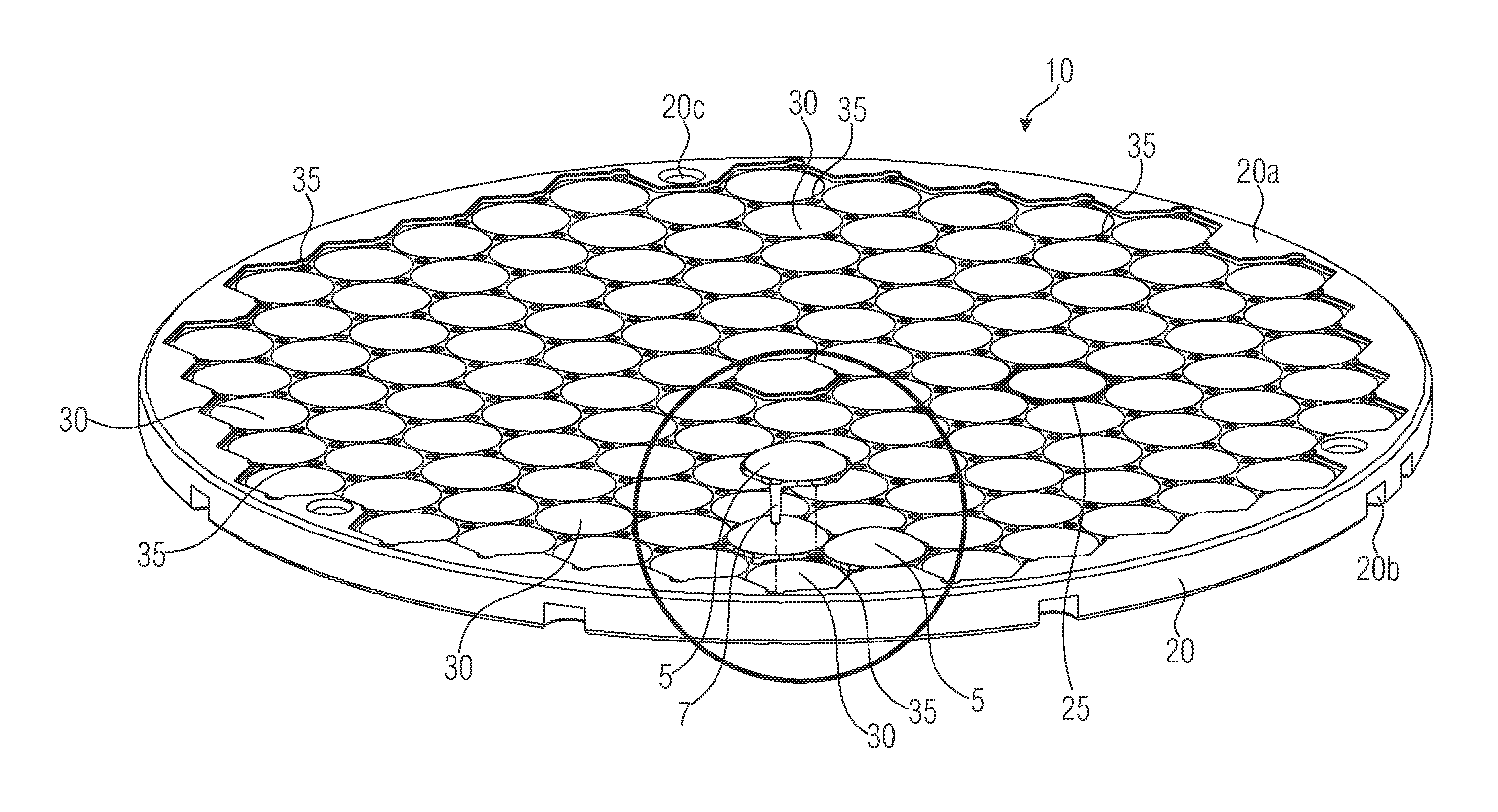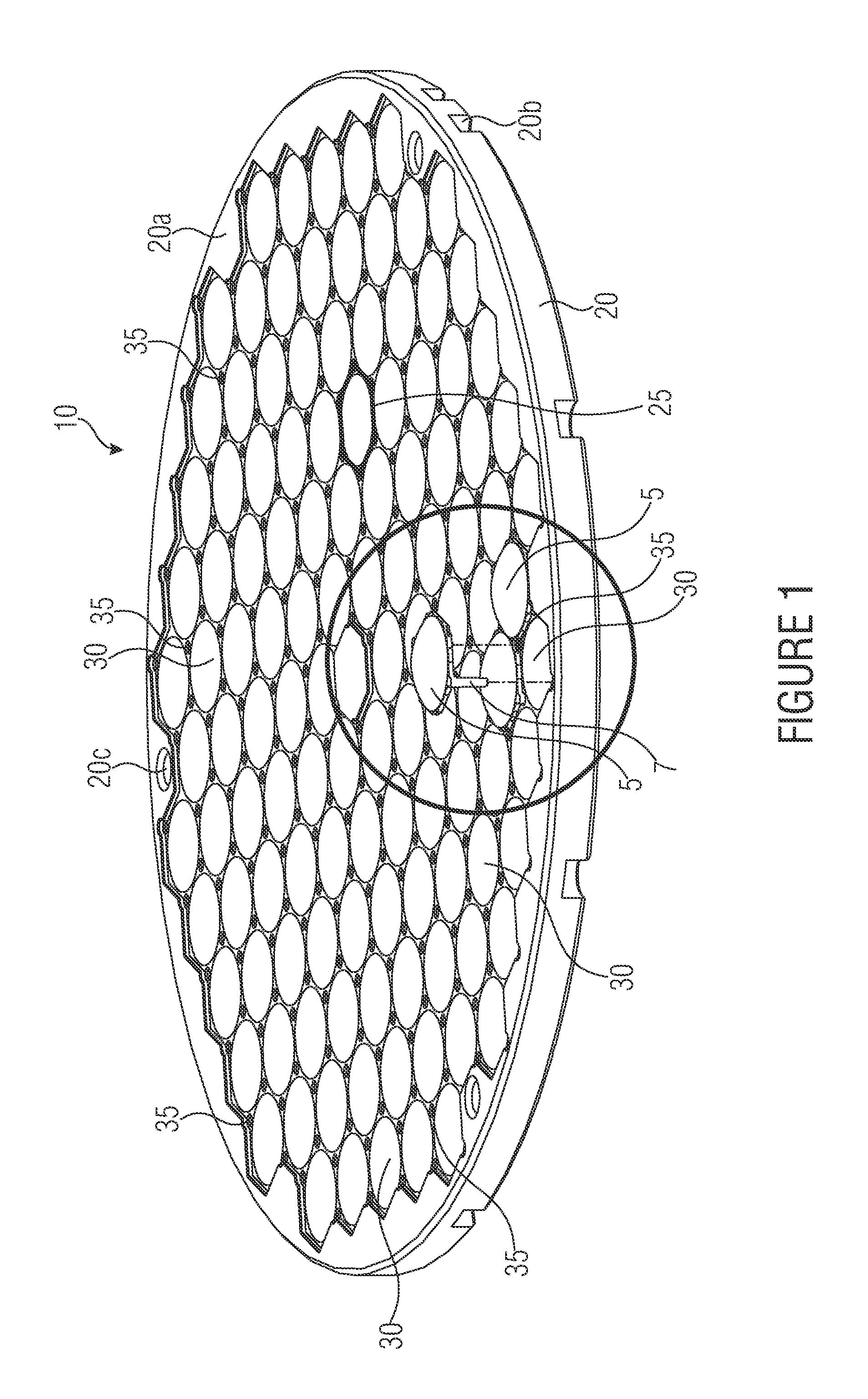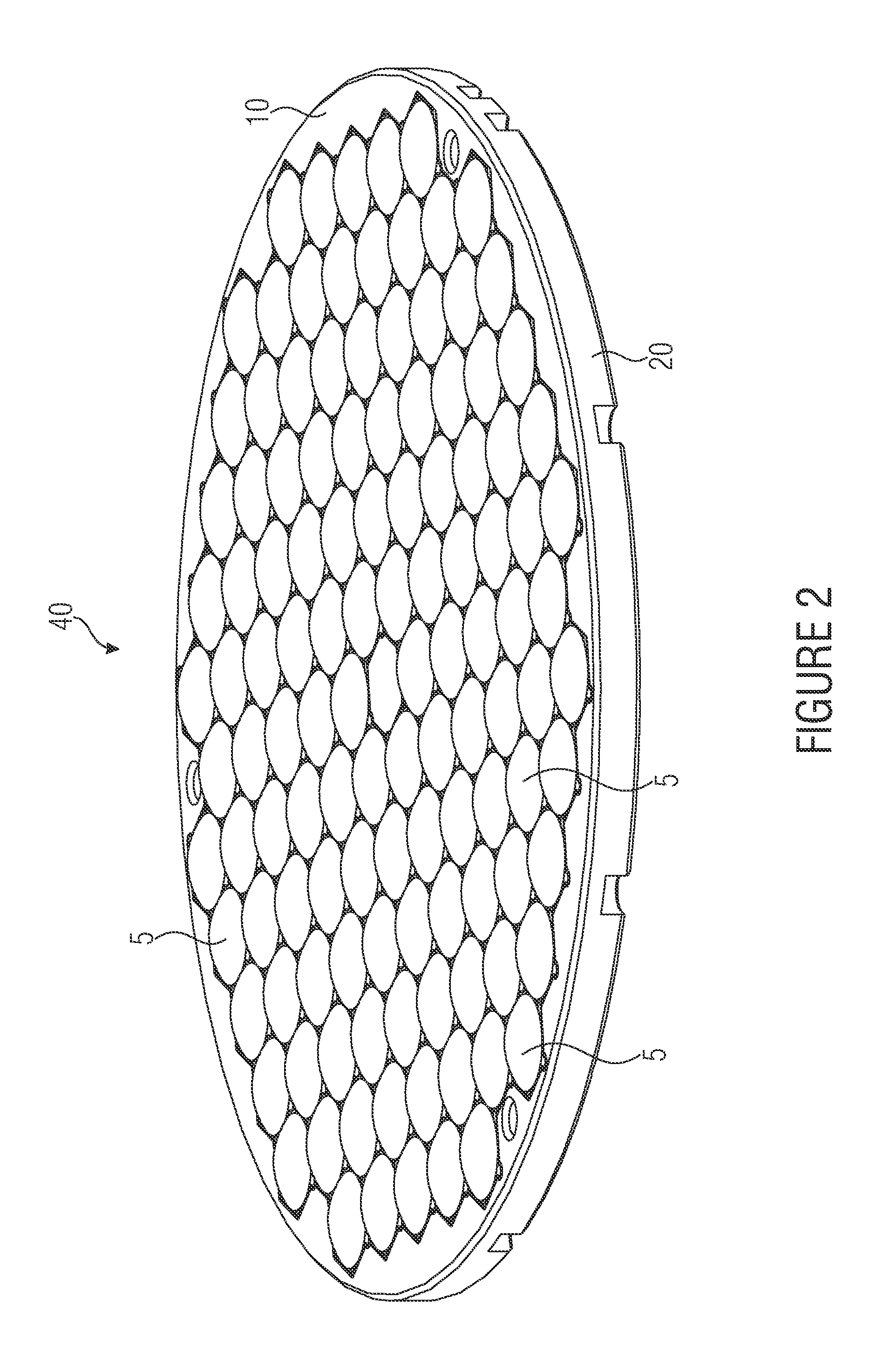Support structure for a plurality of lenses, lens, lens system, and optical system
a technology of supporting structure and lens, applied in the field of supporting structure for a plurality of lenses, can solve the problems of increasing the cost of producing a lens array, affecting the optical performance of the array, and not being used very well for the production of large and flat components, etc., and achieves the effect of increasing production costs and fast and cost-effective insertion
- Summary
- Abstract
- Description
- Claims
- Application Information
AI Technical Summary
Benefits of technology
Problems solved by technology
Method used
Image
Examples
Embodiment Construction
[0055]With respect to the following description of the embodiments of the present invention, it should be noted that the same reference numbers are used throughout the description in the different figures for functionally identical or equal or functionally equivalent elements or steps for simplification reasons.
[0056]FIG. 1 illustrates in a perspective view a support structure or a support system 10 for a plurality of lenses 5 according to an embodiment of the present invention. The support structure 10 has a support plate 20 and a plurality of adjacent hexagonal portions 25 on the support plate 20. Each of the hexagonal portions 25 has a central opening 30. The hexagonal portions 25 form ridges that are formed in the shape of honeycombs. Each of the hexagonal portions has a central circular opening whose diameter can be larger than the width of the ridges of the hexagonal portions 25. The vertices or the corners of the adjacent hexagonal portions 25 can each have recesses 35. These...
PUM
 Login to View More
Login to View More Abstract
Description
Claims
Application Information
 Login to View More
Login to View More - R&D
- Intellectual Property
- Life Sciences
- Materials
- Tech Scout
- Unparalleled Data Quality
- Higher Quality Content
- 60% Fewer Hallucinations
Browse by: Latest US Patents, China's latest patents, Technical Efficacy Thesaurus, Application Domain, Technology Topic, Popular Technical Reports.
© 2025 PatSnap. All rights reserved.Legal|Privacy policy|Modern Slavery Act Transparency Statement|Sitemap|About US| Contact US: help@patsnap.com



